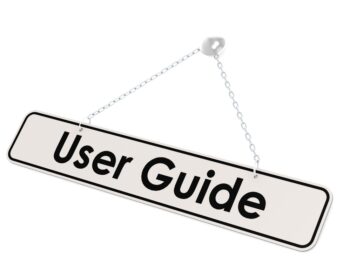Your claims adjuster is your first line of defense in controlling workers’ compensation claims costs (following supervisor/department). Therefore the adjusters’ role is to work for you to resolve your claims with minimum time and cost and maximum service. However, even workers’ compensation professionals have a somewhat murky understanding of what claims adjusters are supposed to do.
Click Link to Access Free PDF Download
“8 ‘Think Outside the Box’ Tactics to Settle Workers’ Comp Claims”
The Adjuster’s Role
Adjusters take the claim to the next level. Adjusters investigate insurance claims by interviewing the claimant and witnesses, consulting police records, and hospital records as needed. Adjusters also photograph the post-accident site. After statements, photos, and onsite visits are completed, the adjuster determines the extent of the company’s liability. Their primary objective is to protect the employer against financial loss and the cost of recovering those losses.
The following give you a general idea of what adjusters are expected to do.
1. Responding to claims in a timely manner.
2. Filing paperwork.
3. Communicating with policy holders.
4. Investigating liability.
5. Assessing Damages.
6. Researching and substantiating medical and indemnity aspects of the claim.
7. Negotiating settlement offers.
8. Ensuring accurate procedures.
9. Protecting the interest of the insurance company the adjuster represents when dealing with claimants.
However, they don’t give you a measure what constitutes excellent service.
The Onsite Visit and the Claims Handling Process
As a new workers’ compensation manager, the first thing you do after completing a workers’ compensation assessment is to visit your claims adjuster on site to see how they receive, process and complete your claims. If you know what to expect from your claims adjuster, you are in a better position to demand excellent service.
An onsite visit reveals the actual layout of the office and, in turn, determines how efficient their work practices are and how quickly they turn claims around. For example, a recent onsite visit to an insurer revealed the adjusters sat in a four-desk pod. A nurse practitioner sat at one desk and adjusters occupied the other three. When adjusters received a telephonic claim, they would “spin and grin” a question to the nurse practitioner who was trained to provide a determination of claim viability. Having a nurse practitioner in their midst markedly increased the adjusters’ ability to quickly turn claims around.
An on-site visit may also reveal claim files resting on the floor. Red Flag! Because information gets lost, or waylaid when files are improperly housed. It means there is a serious flaw in claims handling, either the adjusters are understaffed, or there is a gap in claims handling processes. Files lying on the floor mean claims and information are lying on the floor. Adjusters fielding calls with files lying on the floor, means information on the medical consultation is not close at hand. Therefore, you may assume the adjuster’s ability to provide the best service to you is impacted.
An onsite visit reveals how claims are received and who is the first responder. Do adjusters have an intake coordinator fielding calls and passing the intake information on to the adjusters? Or are the adjusters responsible for both intake and adjustment? Are incoming claim calls received by telephone, fax, email or a web-based claims form? Rule of thumb: Written claims are better than telephonic – there is less opportunity for transmission error.
Ask open-ended questions to elicit maximum information from the adjusters. It’s okay to play dumb for a moment or two. By affecting ignorance, you can discern their ability to make judgment calls, and think out side the box. For example, you could say, “Someone asked me what a “Waddell Test” is, what are those, I couldn’t figure it out?”
Because you do know what a Waddell test is, you can determine how much they know. And if they don’t know what a Waddell test is – well, it’s another red flag, but it helps you decide the level of service you are receiving.
Test the adjuster’s knowledge of workers’ compensation state statutes by asking, “Can you explain how is medical provider selection done in (name the state(s)).”
Chair-side Questionnaire
We have developed a helpful Chair-side Questionnaire to take with you when you visit an adjuster’s office. You can keep it on your laptop and key in the answers as you ask them. Don’t be afraid to write down your answers right then and there. Adjusters are professionals and they realize we all have to document everything. They will not be intimidated by your note taking; in fact, they may remind you to include things as they work on their computers too! (workersxzcompxzkit) How to tell good service from poor?
When all is said and done, how do you know if you have a good claims adjuster or a bad one? Look for these earmarks: 1. How quickly the adjuster responds to a new claim report. 2. How comprehensively the adjuster documents the new claim. 3. How well the adjuster processes the new claim and brings it to fruition without allowing it to languish and become an old claim.
Author Robert Elliott, executive vice president, Amaxx Risks Solutions, Inc. has worked successfully for 20 years with many industries to reduce Workers’ Compensation costs, including airlines, health care, manufacturing, printing/publishing, pharmaceuticals, retail, hospitality and manufacturing. He can be contacted at: Robert_Elliott@ReduceYourWorkersComp.com or 860-553-6604.
Podcast/Webcast: How To Prevent Fraudulent Workers’ Compensation Claims Click here: http://www.workerscompkit.com/gallagher/podcast/Fraudulent_Workers_Compensation_Claims/index.php
WC Books: http://www.reduceyourworkerscomp.com/workers-comp-books-manuals.php
TD Calculator: www.ReduceYourWorkersComp.com/transitional-duty-cost-calculator.php
WC Calculator: http://www.reduceyourworkerscomp.com/calculator.php
Do not use this information without independent verification. All state laws vary. You should consult with your insurance broker or agent about workers’ comp issues.
©2009 Amaxx Risk Solutions, Inc. All rights reserved under International Copyright Law. If you would like permission to reprint this material, contact Info@WorkersCompKit.com.














